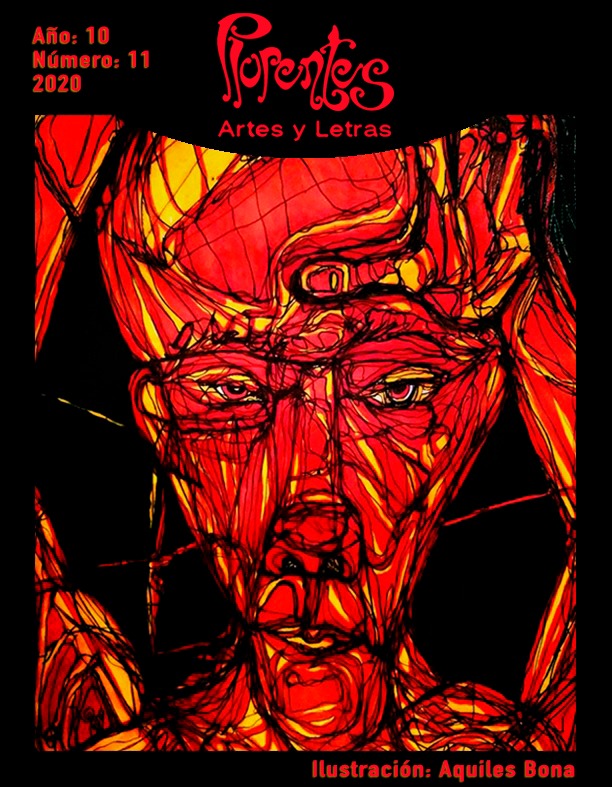Approximations to mirative meanings in the co-construction of the conversational project
DOI:
https://doi.org/10.24215/18536212e001Keywords:
conversation, intersubjectivity, markers, mirativity, functionsAbstract
Based on some uses of certain mirative markers, we are interested in describing some functions that are carried out in colloquial interactions, in relation to the co-construction of the inquiry project. Shared information may be unexpected for the listener, who shows his disbelief to what has been said. We will consider the mirative markers from an intersubjective perspective, as they present the speaker as a modalizer of what is said and leave open the possibility of including the listener by guiding him in his interpretations.
Downloads
References
Aikhenwald, A. (2012).The essence of mirativity. Linguistic typology, 16(3) 435-485.
Berg, B. (2001). Qualitative Methods for the Social Sciences. Boston: Allyn and Bacon.
De Lancey, S. (1997). Mirativity: the gramatical marking of unexpected information. Linguistic typology, 1, 33-52.
De Lancey, S. (2001). The mirativity and Evidentiality. J. Pragmatics, 33, 369-382.
Dickinson, C. (2000). Mirativity in Tsafiki. Studies in Language, 24, 379–422.
Drew, P. (2018). Epistemics in social interaction. Discourse Studies, 20(1), 163-187.
Egerod, S. y Hansson, I. (1974). An Akha conversation. Acta Orientalia, 36, 225–284.
Fraser, B. y Malmaud-Makowski, M. (1996). English and Spanish contrastive markers. Language Sciences, 18, 863–881.
González, M. (2014) Evidentiality, intersubjectivity and salience in Spanish and Catalan markers. Intercultural Pragmatics, 11(3), 409-434.
Heritage, J. (2013). Actions formation and its epistemic and other backgrounds. Discourse Studies, 15(5), 551–578.
Hoye, L. (2008). Evidentiality in discourse: A pragmatic and empirical account. En J. Romero-Trillo (ed.), Pragmatics and corpus linguistics. Berlin/New York: Mouton de Gruyter (pp. 151–174).
Kerbrat-Orecchioni, C. (2005). Le discours en interaction. Paris: Armand Colin.
Mexas, H. (2016). Mirativity as realization marking. Leiden: RESMA Linguistics, Universitet Leiden.
Morganti, F., Carassa, A. y Riva, G. (2008). Enacting Intersubjectivity. Amsterdam: IOS Press.
Peterson, T. (2010). Examining the Mirative and Nonliteral Uses of Evidentials. En T. Peterson y U. Sauerland, U. (ed.), Evidence form Evidentials. Vancouver, Canada: British Columbia University, 28 (pp.129-159).
Piatti, G. (2015). Criterios pragmáticos en la organización sintáctica de la oralidad. Revista Olomucensia, 27, 213–226.
Piatti, G. (2017). La construcción de sintaxis de la oralidad. Estudio sobre algunos fenómenos gramaticales y su interpretación desde la pragmática. Tesis doctoral. La Plata: Repositorio SEDICI, UNLP, 2018. http://sedici.unlp.edu.ar/bitstream/handle/10915/65049/Documento_completo.pdf-PDFA.pdf?sequence=1&isAllowed=y
Piatti, G. (en prensa). Saber y no saber: la coconstrucción del proyecto de indagación en la conversación coloquial. En L. Granato (ed.), Dossier sobre conversación coloquial.
Pilleux, M. (2003). Consideraciones acerca del marcador discursivo No sé po (H). Onomazein, 8, 13-60.
Sánchez López, C. (2017). Mirativity in Spanish. Review of Cognitive Linguistics, 15(2), 489-514.
Slobin, D. y Aksu, A. (1982). Tense, Aspect, Modality and more. En P. Hopper (ed.), Tense-Aspect: Between Semantics and Pragmatics. Amsterdam: John Benjamins (pp. 185-200).
Stalnaker, R. (2002). Common Ground. Linguistics and Philosophy, 25(5), 701-721.
Verhagen, A. (2005). Constructions of Intersubjectivity. Discourse, Syntax and Cognition. Oxford: Oxford University Press.
Published
How to Cite
Issue
Section
License
Acorde a estos términos, el material se puede compartir (copiar y redistribuir en cualquier medio o formato) y adaptar (remezclar, transformar y crear a partir del material otra obra), siempre que a) se cite la autoría y la fuente original de su publicación (revista y URL de la obra), b) no se use para fines comerciales y c) se mantengan los mismos términos de la licencia.





















